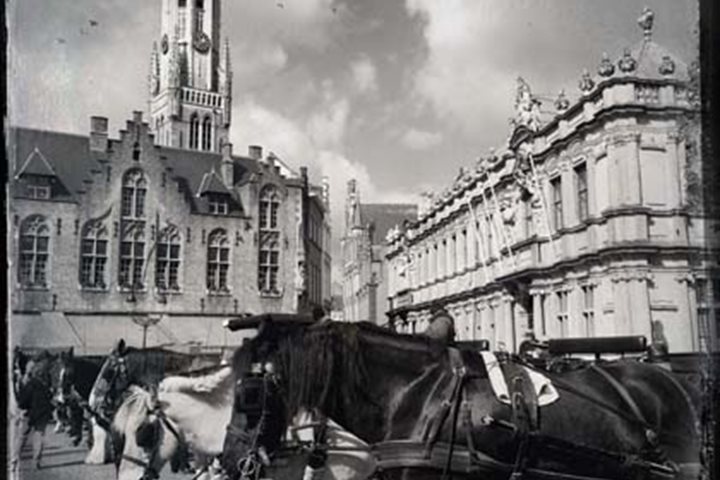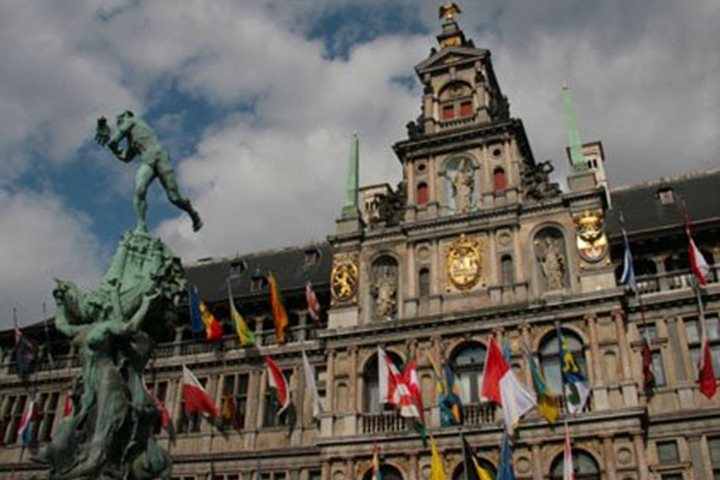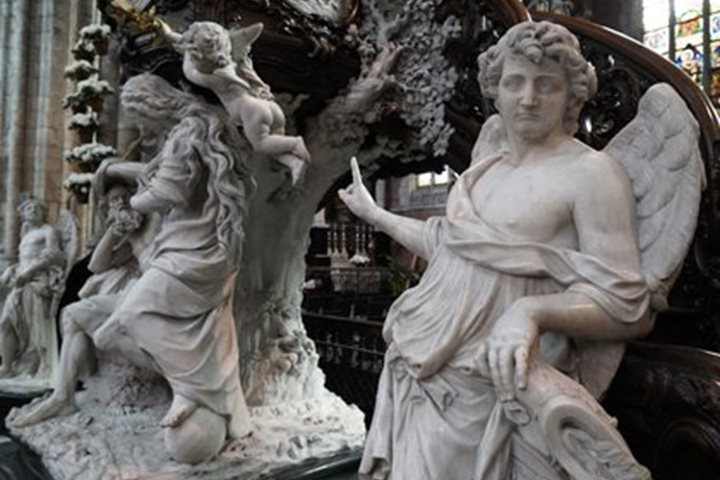This morning we continued our visit to the Low Countries as we left The Netherlands and sailed up the river Scheldt to Antwerp. Antwerp is the second largest city in Belgium after the capital, Brussels, and it is part of the Flemish-speaking region of Belgium. Flemish is, they like to say, a different way of speaking Dutch and separates the inhabitants from the French-speaking population in the south of Belgium.
On the way up the river we enjoyed talks on the water management expertise in the Netherlands, which allows it to be the second-largest exporter of agricultural products in the world after the U.S., even though it is the third-most densely populated country in the world. We also learned about the Dutch colonies in the East and West Indies as well as South Africa and South America.
After lunch most of us went ashore in Antwerp for a walking tour of the city, while others took a bus to the Red Star Line Museum. As Antwerp was the major departure port for immigrants leaving Europe and crossing the Atlantic on the Red Star Line ships to the United States and Canada, the company played a central role in the history of trans-Atlantic immigration. Those of us who took the walking tour of the city were impressed by the beauty of the architectural styles, especially the façade of the Town Hall and the immense towers of the Cathedral of Our Lady in the center of the city. A very important stop on the tour was our visit to the home and studio of Peter Paul Rubens. At the Cathedral there are also a number of Rubens’ paintings on the triptychs in the central nave. Over the altar is an especially impressive painting of the Assumption of the Blessed Virgin.
Our tour of Antwerp took us past many of the high fashion stores as well as by chocolate, lace and waffle shops for which Atwerp is famous. We were also told the story of the name, which means something like “thrown hand.” There are images of hands all over the city which relate to this name. The legend tells of a mythical giant called Antigoon who lived near the river and exacted a toll from those crossing the river. If someone refused, he severed one of their hands and threw it into the river. Eventually, the giant was slain by a young hero named Brabo, who cut off the giant's own hand and flung it into the river. This legend is represented in a large statue in front of the Town Hall.
In the late afternoon, back on board National Geographic Explorer, we were treated to a demonstration of lace making by several of the local ladies. It was an altogether very interesting day in this beautiful jewel of Belgium.







